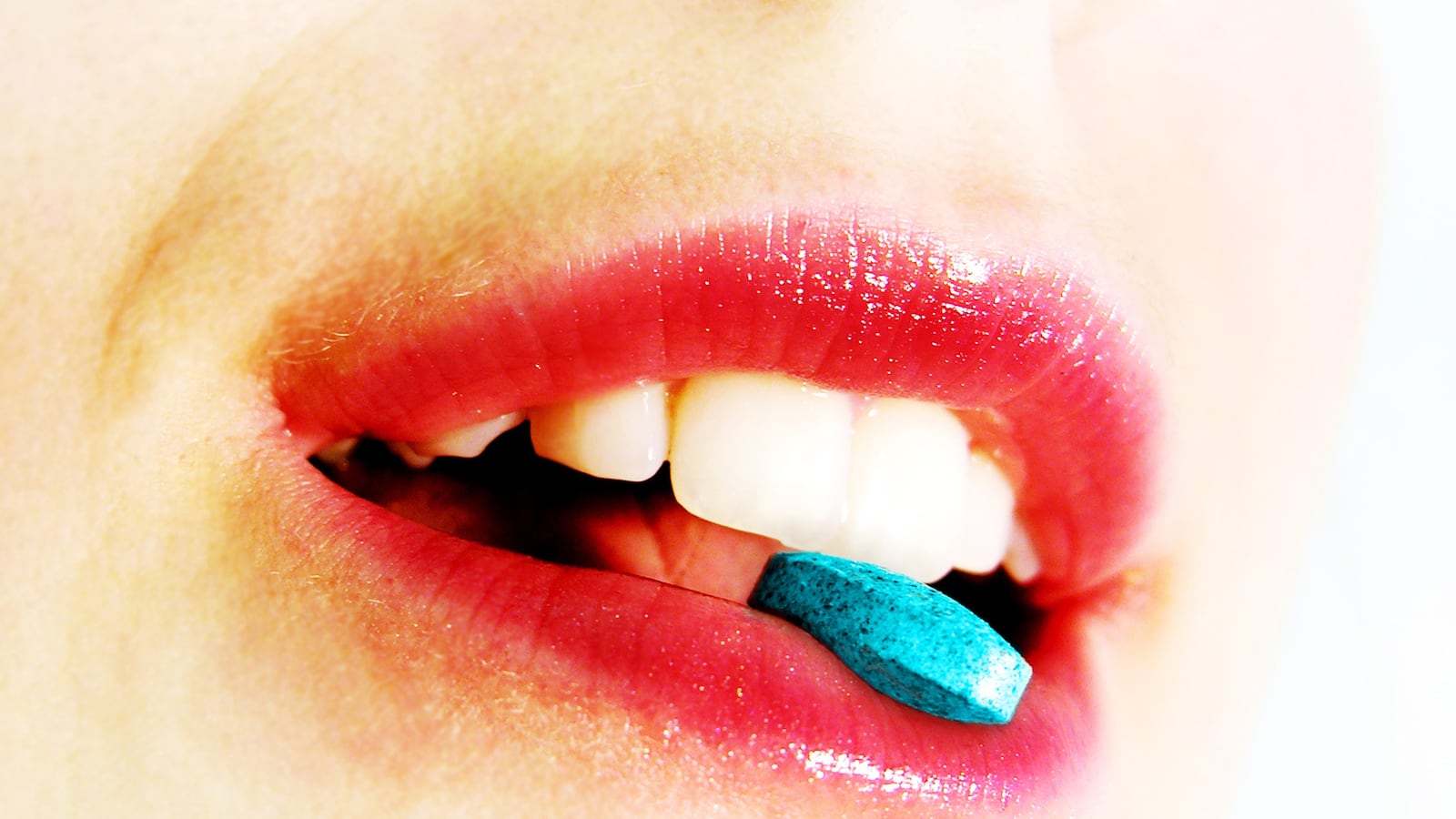Perhaps it’s just the programs I choose to watch, but every time I turn on the television I’m bombarded with commercials featuring attractive middle-aged couples in the midst of a smiling, playful, emotionally intimate moment—with the bedroom as their next destination. And I fully understand the message. I’m being told very directly that there are medications that can help me recapture the long-past sexual delirium of my younger self.
What’s interesting about these commercials is that even though they are visually and emotionally attractive to both members of a couple, the product that’s being touted is for males only. They don’t make this stuff for women! And while I’m grateful that a medical helping hand is available to me, I sometimes wonder: What about women who are struggling with sexual desire? Where is the pill for them?
Some people think the reason we don’t have the equivalent of Viagra for women is that it wouldn’t be profitable. In reality, nothing could be further from the truth. In fact, pharmaceutical developers and manufacturers have tried and tried and tried again to develop the female version of Viagra, hoping to extend the financial windfall that male-oriented drugs have become—perhaps recognizing that women actually complain about low levels of sexual desire much more often than men. The problem is that these drug companies have either forgotten or ignored the fact that male sexual desire and female sexual desire are quite dissimilar in nature and causation.
Male sexual desire is actually pretty easy to comprehend. If a guy feels physically turned on—even a little bit—he’s almost certainly psychologically turned on as well (and vice versa). Of course, as men age their private parts don’t always respond the way they did in high school and college, which can make it difficult and less enjoyable to consummate sexual interest. This is where erection-enhancing drugs come into play, as they can turn even a little bit of physical arousal into a rock-hard erection that sticks around until the deed is done. Heck, research shows that a little bit of Viagra will even help cut flowers stand up straighter for as long as a week. So, put simply, Viagra and similar medications allow a man’s physical arousal to match (and possibly even enhance) his psychological arousal.
Women, on the other hand, can become physically aroused (increased blood flow in the reproductive organs) without becoming psychologically aroused even in the slightest. In other words, in females there is a disconnection between physical and psychological sexual arousal. This means a woman can be thoroughly physically aroused but still not interested in sex, and a Viagra-like drug that enhances the physical arousal won’t help. Numerous drug companies have spent (i.e., wasted) hundreds of millions of dollars proving this fact. Basically, they’ve created drugs for women that function in the same basic fashion as male erection enhancers—physically stimulating genitalia without addressing the psychological elements of sexual desire. As such, every single attempt at increasing female sexual desire through a peripherally acting medication has been a colossal failure. So it seems that the male brain responds to medically enhanced physical sexual arousal with a corresponding craving for sex, but the female brain does not. Women require more.
If you don’t believe me, consider the difference between hardcore pornography, which even in today’s world caters to a mostly male audience, and romance novels and movies, which cater to a mostly female audience. Most male-oriented erotica (hardcore porn) is nothing more than an endless stream of body parts and sexual acts—no kissing, no foreplay, no storyline, and no emotional intimacy. Conversely, erotica for women often skips the sex act entirely, focusing instead on the nature and intensity of the couple’s emotional interaction and connection, because that is the driving force in female sexual desire. Even the recent plethora of relatively sexually graphic romance novels (Fifty Shades of Grey, for instance) are more about emotions and intimate connections than hardcore sex acts.
In their book A Billion Wicked Thoughts, authors Ogi Ogas and Sai Gaddam suggest a possible bio-evolutionary reason for this deep difference in male and female desire. “When contemplating sex with a man, a woman has to consider the long-term. This consideration may not even be conscious, but rather is part of the unconscious software that has evolved to protect women over hundreds of thousands of years. Sex could commit a woman to a substantial, life-altering investment: pregnancy, nursing, and more than a decade of child-raising.” So yeah, for women there is understandably a significant psychological component to sexual arousal and desire—a component that isn’t and can’t be addressed by a Viagra-like pill.
In short, the reason we don’t have the female equivalent of Viagra is that female sexual desire is very different than male sexual desire. If a guy sees a woman with a nice body (or even a nice body part), he can easily become both physically and psychologically interested in sex. And if he’s struggling with the physical part, his issue can quickly be remedied via medication, with any lingering psychological reticence flying out the window soon thereafter.
With women, however, it’s a different process. Women want more. Sure, you’ve got broad shoulders and a hairy chest, but what else do you bring to the table? And usually this “What else?” question will be asked several times before a woman—even a woman who’s ingested the female version of Viagra—gets interested enough in sex to say yes.
Instead of asking why we don’t have the female version of Viagra, maybe we should be asking why pharmaceutical companies insist on treating male and female sexual desire as if they are the same.






